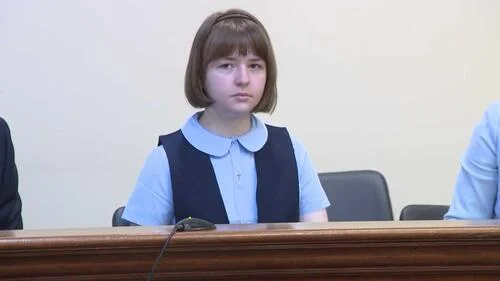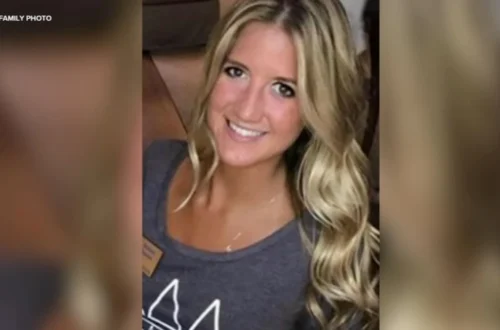Carly Gregg has drawn media attention after a tragic and shocking case that unfolded in Mississippi. This article provides a comprehensive look into who Carly Gregg is, what happened in the case, the legal proceedings, background details, and broader issues it raises.
Background & Early Life
Carly Madison Gregg was born on April 23, 2009. She grew up with her mother Ashley Smylie, father Kevin Gregg, and later a stepfather, Heath Smylie
From early on, Carly was noted to be academically gifted. She skipped the third grade and is said to have scored a 30 on the ACT at a very young age. She also had a love for reading, music, and literature.
Tragically, her younger sibling, Natalie, died at age 18 months from a rare genetic disorder in 2013. That death deeply affected the family.
Carly grew up partly under the care of her maternal grandparents after her parents divorced, living in Vicksburg, Mississippi for medical access for Natalie. She stayed in contact with her biological father, but over time expressed discomfort with those visits.
Her father, Kevin Gregg, in an interview after her conviction, described her as once being “a wonderful child … obviously multi-talented, gifted.” However, he also revealed past struggles, noting Carly had suicidal ideation as a young child.
The Crime: What Happened on March 19, 2024
On March 19, 2024, a deadly event occurred in the family home in Brandon, Mississippi. Ashley Smylie, 40, was shot and killed by her daughter, Carly.
Here’s a timeline of critical actions:
-
Prosecutors say that Ashley discovered hidden marijuana, vape pens, and burner phones in Carly’s room that day, tipping her into confrontation.
-
After returning to the house, it is alleged Carly retrieved her mother’s .357 Magnum handgun from beneath the mattress, concealed it, and walked into her mother’s bedroom.
-
Surveillance video presented in court showed the teen holding the gun behind her back, pacing before the shots rang out.
-
Ashley was shot three times in the face.
-
Later, nervous about what would happen, Carly is alleged to have sent a message to her stepfather, luring him home, then shot him in the shoulder on arrival.
-
Disturbingly, after killing her mother, Carly invited a friend to see the body, asking, “Are you squeamish around dead bodies?”
-
She also was accused of tampering with evidence to cover up her actions.
This combination of premeditation, confrontation, and chilling behavior made this a high-profile and deeply disturbing case.
Legal Process & Conviction
Charges & Trial
Carly Gregg was tried as an adult, despite being a minor (14 at the time). She faced three major charges:
-
First-degree murder (for killing her mother)
-
Attempted murder (for shooting her stepfather)
-
Tampering with evidence
After a five-day trial, the jury took just two hours to deliberate and returned a guilty verdict on all counts.
Sentencing
On September 20, 2024, Carly was sentenced to life in prison without the possibility of parole for both the murder and attempted murder charges. She also received an additional 10 years for tampering with evidence. As per official records, she is currently held in the Youthful Offender Unit of the Central Mississippi Correctional Facility in Rankin County
Appeals & Motions
After conviction, her legal team filed a motion for a new trial, citing new evidence from interviews with Carly’s biological father, including revelations about auditory hallucinations and equine therapy from her past.
However, a judge denied the motion, stating that the new evidence was insufficient to overturn or retry the case.
Her defense had pursued an insanity plea, arguing that she was in a mental health crisis at the time, had memory gaps, and struggled with depression and auditory hallucinations. The prosecution countered that her behavior, planning, and lack of remorse showed she understood right from wrong.
Mental Health, Motives & Psychological Insights
One of the most controversial and scrutinized aspects in this case is Carly’s mental health and what may have led her to commit such violent actions.
Psychiatric Testimony
During the trial, Dr. Andrew Clark, a child psychologist, testified on behalf of the defense. He stated:
-
Carly had depression, and the medications she took sometimes made her feel numb.
-
She was reported to hear voices and had dissociative episodes prior to the incident.
-
On the day of the shooting, she was described as “grumpy and irritable”, with difficulty focusing.
-
She claimed parts of that day “went blank” in her memory.
However, the prosecution rejected the idea that these issues absolved her responsibility, arguing her actions were deliberate and she knew right from wrong.
Psychological Profile & Motive
Some possible contributing factors surfaced during the trial and reporting:
-
The discovery of secret drug use (marijuana, vape pens, burner phones) by her mother earlier that day reportedly instigated the confrontation.
-
Conflict in mother-daughter relationship dynamics, pressure from expectations, and perhaps a feeling of guilt or shame if discoveries were made.
-
Previous trauma: the death of her younger sibling, family upheavals, and reported suicidal ideation might have shaped her emotional resilience.
-
Reports suggest her biological father had a history of drug use, which could have impacted her upbringing.
While these factors do not excuse the outcome, they provide context to a deeply tragic set of events.
Legal, Ethical & Social Implications
The case of Carly Gregg raises many complex questions beyond the criminal acts themselves.
Sentencing Minors to Life Without Parole
Carly was a minor when she committed the crime. The decision to try her as an adult and sentence her to life without parole is contentious. In many states, legislatures or courts restrict life sentences for juveniles due to developmental science supporting reduced culpability in youth
Mental Health & The Criminal Justice System
This case highlights the challenges when mental illness intersects with violent crime:
-
How does the system evaluate insanity or diminished capacity?
-
Are psychiatric defenses taken seriously when evidence is ambiguous?
-
Is there sufficient early intervention for youth presenting self-harm, hallucinations, or trauma?
Media Sensationalism & Public Perception
Because Carly was a teen, this case became part of media spectacle. The narrative around “babyface killer,” shock value, and moral judgments often overshadow deeper issues of mental health or social support. Some reporting has been criticized for sensationalizing the crime.
Victim Rights & Family Trauma
The suffering of Ashley Smylie’s family, especially in public discourse, must not be forgotten. The legal system and media must balance justice for victims with humane treatment of defendants—even when extremely young.
Current Status & Future Prospects
As of late 2024 / early 2025, here is what is known:
-
Carly Gregg is serving her sentences in Mississippi’s Department of Corrections, under MDOC ID 252702.
-
Her appeal and motion for new trial were rejected by a judge.
-
Legal counsel may explore further appeals, but overturning a life sentence in such a case is extremely difficult.
-
Conversations in public and academic circles continue over juvenile justice, mental health in crime, and whether changes in law are needed to handle such cases differently.
Conclusion
Carly Madison Gregg’s case is one of the most harrowing juvenile criminal cases in recent U.S. history. From an academically gifted child to a convicted murderer, the trajectory is tragic, raising many hard questions about mental health, juvenile sentencing, family dynamics, and societal support systems.
-
The crime itself was brutal and premeditated, involving both murder and attempted murder.
-
The trial and sentencing were swift and unforgiving, with her convicted and handed life without parole despite her youth.
-
The case forces us to examine how justice systems treat children who commit adult-level crimes, especially when mental illness and trauma may play a role.
-
Above all, it’s a story of a family shattered, lives lost, and the haunting consequences of decisions made in crisis.





